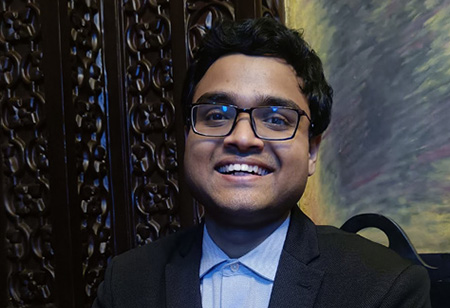 Magazine
Magazine

According to a report by Grand View Research, the Indian Structural Engineering Services market was valued at$4.275 billion in 2023 and is projected to reach $12.498 billion by 2030, growing at a CAGR of 16.6 percent from 2024 to 2030. The market is witnessing an upsurge due to major government infrastructure initiatives, rapid urbanization and a rising focus on sustainable construction practices. As a result, structural engineering consultants have become essential players in driving the design and execution of buildings and infrastructure, contributing meaningfully to the industry’s overall progress. With changing times, clients increasingly seek structural solutions that balance complexity, speed and sustainability without compromising safety or performance. Shatadru Sannyamath, an emerging structural engineer is meeting these expectations by blending advanced engineering insights with creative and future-ready designs.
Shatadru Sannyamath firmly believes that in today’s fast-paced and sustainability-driven world, structural engineers should do more than just handling technical tasks. They should take the lead in finding innovative solutions that improve performance, lower environmental impact, speed up construction and create lasting value for society. “In complex projects, true creativity comes from a deep understanding of the system, turning solid physical principles into purposeful innovation”, says Shatadru Sannyamath, Senior Structural Engineer.
The Academic Journey
Shatadru earned his Bachelor’s degree in Civil Engineering from Jadavpur University. During his time there, he developed a solid problem-solving approach by learning to think critically, stay focused and adapt to real-world situations. His efforts were recognized with seven prestigious awards and memorial medals for his academic and research achievements.
He went on to pursue his Master’s degree from Columbia University where he gained hands-on experience with advanced structural engineering techniques. There he worked with next-generation tools and approaches, including large-scale non-linear dynamic analyses, real-time hybrid simulation and seismic energy dissipation methods like InterModal Targeted Energy Transfer (IMTET).
Treats Tools as Facilitators
Shatadru has worked on finite element tools like ETABS and SAP-2000 to analyze complex, large-scale infrastructure projects. These tools play a crucial role in modern structural design, helping engineers model real-world conditions such as non-linear behavior, construction sequence effects, seismic response and material changes. He applies them thoughtfully to uncover detailed insights, whether it’s fine-tuning drift performance in Special Moment Frames under tight seismic constraints, redistributing loads in Combined Pile Raft Foundations or analyzing slab behavior after cracking to avoid costly retrofits down the line.
Shatadru views computational tools as helpful resources rather than decision makers. For him, they enhance the engineer’s judgment rather than replace it. This mindset has enabled him to design large-scale structural systems that are not only technically sound but also efficient, practical to construct, resilient and often pushed beyond traditional design boundaries through creative thinking.
Honored with Several Fellowship Opportunities
Shatadru also participated in the DAAD-WISE research fellowship at TU Darmstadt in Germany, an experience that significantly shaped his perspective on engineering. It helped him grow beyond a national perspective, shaping a global mindset rooted in fundamentals and centered on innovation. While at TU Darmstadt, he was also part of a research environment focused on dynamic elasto-capillary interactions, a complex area that brings together solid mechanics, fluid mechanics and materials science. The experience showed him that real innovation in engineering often happens when different fields come together, not when they stay separate.
Also, Shatadru was chosen for the Global Leaders in Construction Management (GLCM) fellowship at Columbia University, one of the most respected programs in engineering leadership. The experience deeply shaped his ability to lead complex structural projects with a strategic mindset, adaptability and a strong focus on innovation.
Through initiatives such as developing the Adaptability Maturity Index (AMI) for cities, Shatadru gained a deep understanding of the strong connection between resilient leadership and systems. He believes that both must be adaptable, driven by data and capable of responding to evolving challenges. “When working on large-scale structural designs, particularly in multi-hazard or high-seismic settings, I apply the AMI philosophy”, adds Shatadru. He makes sure that flexibility, resilience, adaptability, modularity and continuous feedback are built into the engineering process from the start.
Future Roadmap
Looking optimistically towards the future, Shatadru believes that those who can navigate and connect different disciplines will lead the way forward. He sees lasting impact in creating structures that are not only strong and safe but also smarter, more sustainable and built to endure. He is also enthusiastic about the development of sustainable materials, particularly zero-carbon and carbon-negative concrete, which are changing the way structural engineering impacts the environment. He wraps up by stating, “By merging core physics principles with computational intelligence, the next generation of engineers will be able to create structures that not only survive but adapt and thrive in an increasingly uncertain world”.
We use cookies to ensure you get the best experience on our website. Read more...